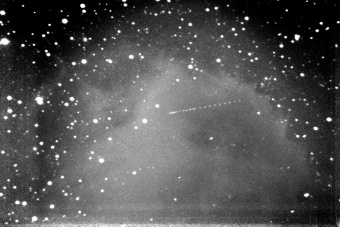SAO Student News
For each SAO e-zine, we would like to share some of the exciting astronomy news stories from our students.
If you have an item that you would like included in future e-zines, please let us know.
News Item
David Higgins is the owner and operator of the Hunters Hill Observatory in northern Canberra. The observatory was established
in 2002, with a mission to conduct precision photometry of Near Earth Objects (NEO) and Minor Planets to determine their synodic rotation
period and hunt for binaries amongst NEOs and minor planets. The observatory is also used photometric observations of variable stars,
Gamma Ray Bursts (GRB's), supernova and otehr transient events.
David has recently discovered his 6th asteroid moon (CBET 957: (1830) Pogson).
Of the 123 known binary asteroids, 44 are main belt objects. Of these 44 main belt objects,
22 have been discovered by amateurs. And of the 22 known amateur discoveries, 18 have been discovered by
Brian Warner (US), Don Pray (US) and David, with 6 discoveries a piece. Only 2 other binary asteroids have been discovered by
(professional) southern hemisphere observers. All of the amateur discoveries came as the result of lightcurve analysis.
David has also completed a time series of images of Minor Planet 28736, which he noticed was
traversing a region revoid of stars. In the image below, David has co-added (SUM) all 44 images in the series,
resulting in the equivalent of an approximately 3 hour exposure. In the background we can clearly see
a dark nebula (which David suggests could be LBN 19, LDN 188 or LDN 175 - the star charts put all 3
overlapping each other).
The brightest pixel in the brightest part of the nebular measures magnitude
20. The image is 25' x 18' and the "dotted" line is the target Minor Planet 28736.
Minor Planet 28736: 44 co-added images from the Hunters Hill Observatory.
To learn more about David's observatory and the work he does, visit
http://www.david-higgins.com/Astronomy/








